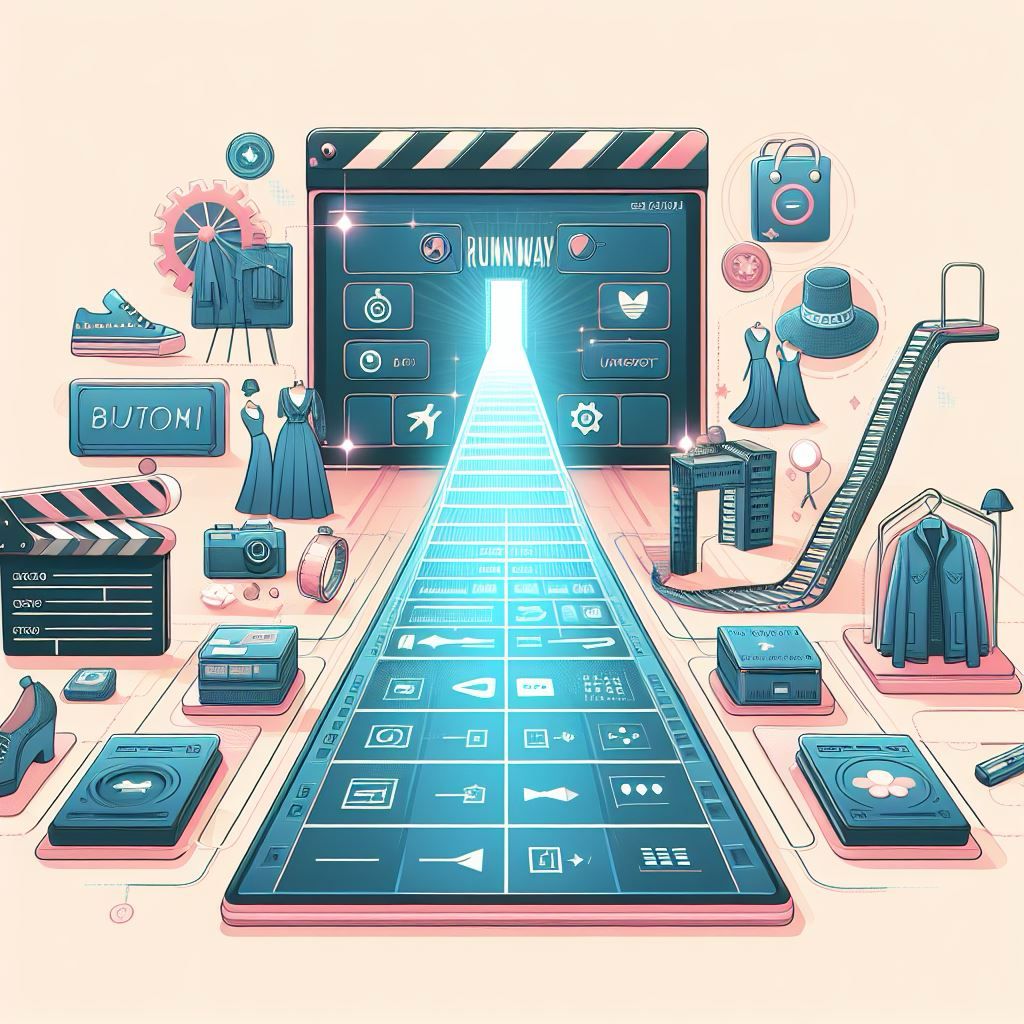Introduction
In a world where art and technology converge, the marriage of artificial intelligence (AI) and creative expression has given rise to a new era of possibilities. Among the innovative tools leading this charge is Runway, a platform that empowers artists to seamlessly integrate AI into their artistic process. In this blog post, we will embark on a journey into the fascinating realm of AI artistry, exploring the transformative capabilities of Runway prompts and how they can be harnessed to bring your creative visions to life.
As we delve into the nuances of using Runway prompts, we’ll uncover the simplicity and depth with which artists can navigate the platform, unlocking a trove of artistic potential. Whether you’re a seasoned digital artist or a newcomer to the world of AI creativity, this guide aims to demystify the process, providing you with the tools and insights needed to create stunning AI art that captivates and inspires. Join us as we explore the intersection of imagination and technology, discovering
What are Runway prompts?
Runway prompts are textual input instructions that users provide to the Runway platform to guide artificial intelligence (AI) models in generating visual content. These prompts serve as a creative directive, influencing the style, theme, and details of the AI-generated output. By crafting specific and imaginative prompts, users can manipulate the AI models to produce diverse and visually striking artworks.
The flexibility of Runway prompts lies in their ability to adapt to various AI models available on the platform. These models include powerful algorithms such as DALL-E, CLIP, and StyleGAN, each with its unique capabilities. Users can experiment with different prompts to explore a wide range of artistic possibilities, from surreal landscapes and abstract compositions to intricate details influenced by the language used in the prompts.
In essence, Runway prompts act as a bridge between the user’s creative vision and the computational prowess of AI models, allowing artists to harness the potential of artificial intelligence to create unique and stunning visual art. The iterative nature of working with prompts enables users to refine their vision, experiment with different styles, and push the boundaries of their artistic expression in collaboration with AI.
How to write effective Runway prompts
Writing effective Runway prompts is an art in itself, as it involves providing clear and imaginative instructions to guide the artificial intelligence (AI) models in generating compelling visual content. Here are some tips on how to write effective Runway prompts:
Be Descriptive and Specific:
Provide detailed and specific instructions to convey your artistic vision. Instead of using generic terms, describe the desired elements, colors, and compositions.
Experiment with Adjectives and Adverbs:
Inject your prompts with vivid adjectives and adverbs to convey mood and atmosphere. This helps the AI model understand the emotional tone you want to achieve in the artwork. For instance, use words like “whimsical,” “serene,” or “futuristic” to guide the AI towards your intended style.
Combine Concepts:
Merge different ideas and concepts within a single prompt to create unique and unexpected outcomes. This encourages the AI model to blend elements, resulting in more diverse and intriguing visual outputs. For example, combine “underwater city” with “steampunk architecture” for a fascinating hybrid prompt.
Use Metaphors and Analogies:
Employ metaphors and analogies to convey abstract concepts or emotions. This adds a layer of depth to your prompts, allowing the AI model to interpret and translate the metaphor into visual elements.
Adjust Parameters:
Experiment with adjusting parameters within your prompts to fine-tune the output. Play with scale, orientation, and other specific details to guide the AI model in creating variations of your initial concept. This iterative approach helps you explore different facets of your artistic vision.
Iterate and Refine:
Writing effective prompts often involves an iterative process. Don’t hesitate to refine and iterate on your prompts based on the results you observe. Experiment with small changes to uncover new possibilities and hone in on the exact creative direction you envision.
Consider Storytelling Elements:
Infuse storytelling elements into your prompts to create a narrative for the AI to follow. Describe characters, settings, and events to guide the generation of scenes that tell a visual story. This can result in more cohesive and engaging AI-generated art.
Explore Opposites and Contrasts:
Incorporate opposites or contrasts in your prompts to create dynamic and visually striking compositions. For example, explore the interplay between “dark and light,” “chaos and order,” or “organic and mechanical” to spark the AI model’s creativity.
Here are some examples of Runway prompts:
“Create a portrait of a woman with long, flowing hair and a gentle smile.”
In this prompt, the user guides the AI model to generate a visual representation of a specific subject — a woman. The emphasis on details like “long, flowing hair” and a “gentle smile” provides the AI with a clear image of the desired emotional tone and physical attributes.
“Create a landscape of a mountain range with a waterfall cascading down the side.”
This prompt directs the AI model to render a natural scene, showcasing a landscape with distinct geographical features. The mention of a “mountain range” and a “waterfall cascading down the side” sets the stage for a dynamic and visually striking landscape. Such prompts are effective for generating realistic depictions of natural settings and exploring the AI model’s ability to render intricate details in a scenic environment.
“Create a still life of a bowl of fruit with a vase of flowers in the background.”
This prompt illustrates the user’s intent to generate a still life composition, focusing on everyday objects arranged aesthetically. By specifying “a bowl of fruit” as the primary subject and “a vase of flowers in the background,” the user encourages the AI to create a balanced and visually appealing arrangement.
“Create an abstract painting with swirling colors and shapes.”
This prompt invites the AI model to produce abstract art, emphasizing the use of “swirling colors and shapes.” Unlike the previous examples, this prompt prioritizes the exploration of non-representational, experimental forms. By encouraging the AI to generate abstract paintings, users can delve into the realm of artistic expression, allowing for more interpretive and subjective outcomes.

Here are some of the benefits of using Runway prompts to create AI art:
It’s easy to use: Runway presents a myriad of advantages for artists and creative enthusiasts alike, making the process of generating AI art accessible and enjoyable. One of the primary benefits is its user-friendly interface, ensuring that individuals, regardless of their artistic background, can engage with the platform effortlessly. The intuitive design of Runway simplifies the artistic process, providing a welcoming space for both beginners and seasoned artists to explore the fusion of AI and creativity.
It’s fast: Speed is another remarkable advantage offered by Runway. The platform’s efficiency allows users to transform their ideas into tangible AI-generated art within a matter of minutes, eliminating the need for prolonged hours of intricate work. This rapid turnaround time not only enhances productivity but also encourages users to experiment freely, unburdened by time constraints.
It’s affordable: Runway stands out for its affordability, as it operates on a free-to-use model. This democratization of AI art creation ensures that financial constraints do not hinder individuals from delving into the world of artificial intelligence and expressing their creativity. By providing a cost-free platform, Runway invites users from diverse backgrounds to explore and harness the potential of AI, fostering a community of artists who can contribute to and benefit from the platform’s expansive capabilities.
It’s fun: Beyond its practical advantages, Runway injects an element of fun into the creative process. The platform serves as a playground for experimentation, allowing users to push the boundaries of their creativity and discover novel artistic expressions. The joy of exploration is embedded in the platform’s DNA, encouraging users to approach AI art creation with a sense of curiosity and playfulness. This element of fun not only makes the creative journey more enjoyable but also inspires users to unlock new dimensions of their artistic potential through the collaboration with AI.
Conclusion
The use of Runway prompts emerges as a transformative gateway for artists seeking to venture into the realm of AI artistry. By embracing this innovative platform, creators can effortlessly integrate artificial intelligence into their creative process, unlocking a plethora of possibilities. The synergy between human imagination and computational prowess, facilitated by Runway prompts, has the power to yield truly stunning and unique artworks.
Runway’s user-friendly interface acts as a bridge, connecting artists, regardless of their proficiency level, with advanced AI models. The ease of use ensures that the exploration of AI-generated art is not confined to the realm of experts but is open to anyone with a desire to express themselves creatively.
Speed becomes an ally in this creative journey, as the rapid generation of AI art within minutes liberates artists from the constraints of time. This expeditious process not only enhances productivity but also encourages a dynamic and iterative approach, allowing creators to refine and redefine their visions swiftly.
Affordability adds an additional layer of accessibility, as Runway operates as a free platform. The removal of financial barriers ensures that artists from diverse backgrounds can engage with AI art creation without constraints, fostering a community of creators contributing to the democratization of artistic expression.


I know this web page gives quality depending articles or reviews
and other information, is there any other site which provides these kinds of data
in quality?
Here is my web blog: vpn special coupon code 2024
wonderful points altogether, you just received a new reader.
What could you suggest about your submit that you simply made some days ago?
Any positive?
Feel free to surf to my website: vpn 2024
If some one needs facebook vs eharmony to find love online be updated with latest technologies
after that he must be pay a visit this web site and be up to
date daily.
Wow! This blog looks exactly like my old one!
It’s on a entirely different topic but it has pretty much the same
layout and design. Excellent choice of colors!
Also visit my website :: nordvpn special coupon code 2024